预约演示
更新于:2025-09-09

Houghton College
更新于:2025-09-09
概览
关联
100 项与 成都比亚迪科技有限公司 相关的临床结果
登录后查看更多信息
0 项与 成都比亚迪科技有限公司 相关的专利(医药)
登录后查看更多信息
48
项与 成都比亚迪科技有限公司 相关的文献(医药)2021-12-01·Journal of religion and health4区 · 医学
Listening to Transgender and Gender Diverse Students on Christian College Campuses
4区 · 医学
Article
作者: Keefe, Heather ; Dean, Janet B ; Stratton, Stephen P ; Lastoria, Michael ; Yarhouse, Mark A
This study was an initial investigation of important areas of interest within the literature on transgender and gender diverse students, namely psychological health, well-being and campus climate for transgender and gender diverse students in young adulthood. What is unique is that data were obtained from Christian transgender and gender diverse students attending Christian college and universities. A sample of 31 undergraduate transgender students at nine Christian institutions in which staff were affiliated with the Association for Christians in Student Development completed an online survey. Participants reported high levels of religiosity, diversity in their attitudes about gender identity, negative perceptions of campus climate, lower levels of social support for gender identity than in general, moderate to high levels of psychological distress, and low to moderate levels of psychological well-being.
2021-01-01·Computational molecular bioscience
Reinforcement Learning of Molecule Optimization with Bayesian Neural Networks
作者: Hu, Wei
Creating new mols. with desired properties is a fundamental and challenging problem in chem.Reinforcement learning (RL) has shown its utility in this area where the target chem. property values can serve as a reward signal.At each step of making a new mol., the RL agent learns selecting an action from a list of many chem. valid actions for a given mol., implying a great uncertainty associated with its learning.In a traditional implementation of deep RL algorithms, deterministic neural networks are typically employed, thus allowing the agent to choose one action from one sampled action at each step.In this paper, we proposed a new strategy of applying Bayesian neural networks to RL to reduce uncertainty so that the agent can choose one action from a pool of sampled actions at each step, and investigated its benefits in mol. design.Our experiments suggested the Bayesian approach could create mols. of desirable chem. quality while maintained their diversity, a very difficult goal to achieve in machine learning of mols.We further exploited their diversity by using them to train a generative model to yield more novel drug-like mols., which were absent in the training mols. as we know novelty is essential for drug candidate mols.In conclusion, Bayesian approach could offer a balance between exploitation and exploration in RL, and a balance between optimization and diversity in mol. design.
2021-01-01·Journal of biomedical science and engineering
Inverse Molecule Design with Invertible Neural Networks as Generative Models
作者: Hu, Wei
Using neural networks for supervised learning means learning a function that maps input x to output y .However, in many applications, the inverse learning is also wanted, i.e. , inferring y from x , which requires invertibility of the learning.Since the dimension of input is usually much higher than that of the output, there is information loss in the forward learning from input to output.Thus, creating invertible neural networks is a difficult task.However, recent development of invertible learning techniques such as normalizing flows has made invertible neural networks a reality.In this work, we applied flow-based invertible neural networks as generative models to inverse mol. design.In this context, the forward learning is to predict chem. properties given a mol., and the inverse learning is to infer the mols. given the chem. properties.Trained on 100 and 1000 mols., resp., from a benchmark dataset QM9, our model identified novel mols. that had chem. property values well exceeding the limits of the training mols. as well as the limits of the whole QM9 of 133,885 mols., moreover our generative model could easily sample many mols. (x values) from any one chem. property value (y value).Compared with the previous method in the literature that could only optimize one mol. for one chem. property value at a time, our model could be trained once and then be sampled any multiple times and for any chem. property values without the need of retraining.This advantage comes from treating inverse mol. design as an inverse regression problem.In summary, our main contributions were two: 1) our model could generalize well from the training data and was very data efficient, 2) our model could learn bidirectional correspondence between mols. and their chem. properties, thereby offering the ability to sample any number of mols. from any y values.In conclusion, our findings revealed the efficiency and effectiveness of using invertible neural networks as generative models in inverse mol. design.
40
项与 成都比亚迪科技有限公司 相关的新闻(医药)2025-09-04
·精准药物
从2021年到2025年,中国创新药行业走完了一轮由“盛极而衰”到“否极泰来”的完整轮回。
将整个行业重新送上巅峰的触发性事件,是大量的中国创新药企业的在研管线,以此前难以想象的高额交易对价,完成了向包括全球头部MNC药企在内的海外同行的授权。
在国内一度融资困难的创新药管线,在国际市场竟然可以卖出让人瞠目结舌的天价。
这种强烈的反差,让整个行业再次对于这一发展模式达成一致共识:进军全球,深度参与国际创新药市场的竞争,是中国创新药企业持续发展、乃至向更高层次跃迁的不二之选。
目前,在整个创新药行业中发展趋势最为强劲的头部企业,无疑是那批在数年前能够成功拒绝“低垂果实”的诱惑,潜心研发能真正解决患者需求的高难度FIC或者高质量BIC管线的创新药公司。
展望未来,若干年后的中国创新药行业,能够继续大放异彩的那批企业,必将是当下依托各自的资源禀赋与核心能力,坚定而深入地推进国际化策略的创新药公司。
事实上,确实已经有越来越多的中国创新药企业,正在以各自的策略和打法,逐步打开全球市场的大门,并且不断地取得激动人心的进展。
以复宏汉霖为例,这家中国药企的国际化进程,不仅已经取得了累累的硕果,其差异化的全球化路径,也颇具行业借鉴意义。
高度国际化的生物类似药全球头部玩家
2025年9月2日,复宏汉霖与合作伙伴Organon共同宣布,美国食品药品监督管理局(FDA)已批准其地舒单抗注射液BILDYOS®(60mg/mL)和BILPREVDA®(120mg/1.7mL)的上市申请。
这两款产品,分别为安进的原研产品PROLIA®(denosumab)和XGEVA®(denosumab)的生物类似药,此次获批覆盖原研产品在美国已获批的所有适应症。
BILDYOS和BILPREVDA的获批,是基于一整套全面数据的审查,以及一项临床对比研究。
研究结果表明,BILDYOS和BILPREVDA在安全性、纯度和效力方面与原研药PROLIA和XGEVA高度相似,且无临床意义上的疗效差异。
这是复宏汉霖又一批自主研发、自主生产的生物类似药,取得美国监管认可,成功登陆美国这个标准最为严苛、同时也是全球规模最大的成熟市场。
从复宏汉霖为地舒单抗生物类似药选择的合作伙伴来看,公司对于这款药物在美国的商业化成功显得志在必得。
2022年6月,复宏汉霖宣布与Organon公司签署授权许可及供货协议,授予其对公司自主开发的帕妥珠单抗生物类似药HLX11、地舒单抗生物类似药HLX14两款产品在除中国以外全球范围内进行独家商业化的权益,全面覆盖美国、欧盟、日本等主流生物药市场和众多新兴市场。
根据协议条款,复宏汉霖将从交易中获得5.41亿美元的潜在收入,其中7300万美元为交易首付款。
Organon(NYSE: OGN)是一家自默沙东拆分而来的全球医药公司,目前旗下覆盖阿达木单抗、曲妥珠单抗、贝伐珠单抗等多款主流的生物类似药,在全球多个国家的生物类似药市场的准入、定价、销售等环节有丰富的经验。
此次地舒单抗在美国获批上市,是复宏汉霖的全球生物类似药版图的又一次成功拓展。
首选在美国这个全球药品监管规则最严格的市场上市,复宏汉霖的地舒单抗用这种方式证明了自己“国际一流”的品质,这对于在其他市场的准入有极大的帮助。
目前,上述两个规格的地舒单抗,也已经向欧盟和加拿大等国家和地区的监管机构递交了上市申请,其中在欧盟已经获得CHMP发布的推荐上市的积极意见,预计将在2025年下半年获得上市批准。
根据公开信息,地舒单抗原研药在2024年的全球销售额约为66亿美元,这是一个可观的市场。
通过和Organon公司的密切合作,复宏汉霖有望凭借与原研药同等的疗效以及具有显著竞争力的成本优势,迅速在地舒单抗生物类似药市场抢占份额,为公司未来的业绩打造又一个强劲的增长引擎。
至此,复宏汉霖已经拥有了5款已上市生物类似药,如果再算上在研的管线,未来复宏汉霖的生物类似药板块,将拥有10款以上商业化品种,覆盖目前全球范围内主要的生物类似药品种。
这个配置,已经足以让复宏汉霖跻身全球生物类似药头部企业的行列,也是公司在生物类似药领域成熟高效的研发、临床、注册、生产等全体系优势的集中体现。
凭借着这种在生物类似药领域的体系性优势,复宏汉霖的全球化路线也选择了以生物类似药作为切入点和突破口,目前来看,这种差异化的策略大获成功。
复宏汉霖的产品已累计在全球近60个国家和地区获批上市,覆盖亚洲、欧洲、北美洲、拉丁美洲及大洋洲。
其中,核心产品汉曲优®(曲妥珠单抗)作为首款在中国、欧盟和美国均获批的"中国籍"单抗生物类似药,已在包括美国、欧盟、澳大利亚等50多个国家和地区上市,并进入多国医保目录,全球累计发货超750万支,惠及全球数十万名患者。
凭借着汉曲优®这款优质产品,复宏汉霖成功地与Accord、Abbott等多家国际一流的医药企业达成了合作,为持续开拓全球市场构建了良好的渠道基础。
此外,复宏汉霖的汉利康®、汉贝泰®(贝伐珠单抗)等也成功在海外获批。
可以说,在生物类似药出海领域,复宏汉霖已经毫无疑问地走在了行业的前列,而在这个过程中积累的宝贵经验,也逐渐内化为公司的核心能力,为公司全系产品的全球化推广奠定了坚实的基础。
创新药出海:具备全球竞争力的硬核管线
在价值含量更高的创新药领域,复宏汉霖的出海成绩同样让行业为之瞩目。
作为全球首个获批一线治疗小细胞肺癌(SCLC)的抗PD-1单抗,复宏汉霖的H药斯鲁利单抗(中国商品名:汉斯状®,欧洲与印度商品名:Hetronifly®),目前已在全球近40个国家和地区获批上市,覆盖全球近半数人口。
这款药物在多个国家的商业化进度,都体现出复宏汉霖极高的全球化效率。
在印度市场,斯鲁利单抗于2025年6月底获批上市,用于一线治疗广泛期小细胞肺癌(ES-SCLC),成为印度首个且唯一在该适应症获批的抗PD-1单抗。
7月31日,斯鲁利单抗就完成了首批面向印度市场的供货,且订单量达到了10万支,并于8月宣布高效完成印度首张处方,上市12天即完成超过150例用药。
印度市场的给力表现,将成为斯鲁利单抗全年销售金额超预期增长的驱动因素之一。
在欧盟市场,斯鲁利单抗于今年2月获批上市,成为当地首个用于ES-SCLC治疗的抗PD-1单抗。
8月,复宏汉霖宣布已经在德国开出首张处方,标志着斯鲁利单抗在欧盟市场的商业化进程取得关键突破。
此外,斯鲁利单抗进军美国市场的进程也在有序推进,其头对头阿替利珠单抗一线治疗ES-SCLC的美国桥接试验,预计将于2025年下半年完成所有受试者的招募入组,并有望于2026年上半年向美国FDA递交生物制品许可申请(BLA)。
如果成功进入美国市场,将是这款大药的全球销售金额腾飞的拐点。
除了斯鲁利单抗以外,复宏汉霖还有多款在研的创新药管线,都具备显著的全球性竞争力,这将是复宏汉霖持续深耕全球创新药市场的管线基础。
2025年7月14日,复宏汉霖正式宣布,公司自主研发的新表位HER2单抗HLX22,联合曲妥珠单抗及化疗一线治疗HER2阳性晚期胃癌的III期研究(HLX22-GC-301),已经顺利完成美国首例患者给药。
这项关键III期临床研究的设计方案,选择用HLX22联合曲妥珠单抗及化疗,头对头对比一线标准疗法(曲妥珠单抗+化疗±帕博利珠单抗)。
也就是说,复宏汉霖选择了最硬核的“头对头打擂台”方式,以HLX22挑战全球药王K药。
对于另一款研发进度处于全球一线阵营的核心“大单品” PD-L1 ADC HLX43,复宏汉霖也采取了全速推进的态度。
据公司披露,目前HLX43在中、美、日、澳等地累计入组超过300例患者。尤其在NSCLC适应症上,公司开展了一项国际多中心II期临床研究,现已完成中、美两国的首例受试者入组。
此外,HLX43还是全球首个布局胸腺癌的PD-L1 ADC,复宏汉霖计划近期启动其国际多中心临床研究,加速填补这一罕见癌种领域的 ADC治疗空白。
以上种种布局,正也凸显了复宏汉霖对其创新药疗效的高度自信和坚定的全球化决心。
一款中国创新药,要在标准最为严苛的美国市场拿下可观的市场份额,挑战现有的临床治疗标准、拿下“BIC”的地位,显然是最为有效的方式,同时却也是风险最大的选项。
但是对于一家志在全球市场的创新药公司来说,这是一条必须选择的道路。
唯有如此,才能真正在全球创新药市场立足,才有可能完成从“中国药企”向“全球化药企”的跃迁。
复宏汉霖,已经果断地迈出了全球化过程中至关重要的这一步。
通向“全球化药企”的差异化道路
以生物类似药作为全球化的开路先锋,在此基础上积累必要的经验,完成全球化体系的建设,再以硬核的原始创新能力打造具备全球竞争力的创新药管线,为公司深度参与全球创新药市场竞争提供充足的“弹药”,这种循序渐进的过程,便是复宏汉霖独特的全球化路线。
这种模式最大的优势,在于生物类似药板块可以提供稳定的现金来源,创新药板块则为企业奠定了长期的发展和想象空间,二者高度互补,形成一种足以应对行业周期波动的平衡发展模式。
2023年,在生物类似药的优异销售表现之下,复宏汉霖首次实现全年度盈利,净利润达5.46亿元,成为首家凭借产品销售实现盈利的港股18A创新药企。
2024年和2025年上半年,复宏汉霖继续保持高质量盈利,净利润分别为8.21亿元和3.90亿元。
短短2年半的时间内,公司净利润超过了17亿,在相当一部分的未盈利Biotech受困于融资困难、研发费用难以筹措的行业低潮期,这种持续的盈利能力保证了公司的研发可以按计划推进,其重大意义显然不言而喻。
进入到2025年,国内生物类似药的集中采购,已经被提上日程。
对于国内所有入局生物类似药行业的药企而言,销售收入或多或少都会面临着一定的挑战。
但是对于复宏汉霖而言,在长期的全球化和创新管线布局之下,2025年下半年在多个国家和地区,都将面临着上市药物的销售放量预期,即使国内生物类似药的集采最终落地,对于公司整体收入的影响,也将被大大对冲。
从商业化角度考虑,这或许就是中国药企推进全球化战略的意义所在。
简而言之,面向全球市场未被满足的临床需求开展核心管线的研发,从全球市场获取收入和利润,是中国创新药企业摆脱单一市场依赖的绝佳途径,也是中国创新药产业在完成初级阶段的积累和建设之后,向更高阶段持续发展的内在要求。
也就是说,全球化既是企业自身的刚需,也是创新药行业发展的必然要求和趋势。
只有顺应这一潮流,以具备全球竞争力的管线、深度拥抱国际市场的中国创新药企业,才能最终脱颖而出,完成从“中国药企”向“跨国药企”的质变。
就像在多个制造业细分领域,中国已经诞生出类似华为、比亚迪、大疆这样的全球头部企业一样,中国创新药行业,最终也必将诞生属于自己的全球头部企业。
复宏汉霖,已经朝着这个方向,迈出了坚实的第一步。
声明:发表/转载本文仅仅是出于传播信息的需要,并不意味着代表本公众号观点或证实其内容的真实性。据此内容作出的任何判断,后果自负。若有侵权,告知必删!
长按关注本公众号
粉丝群/投稿/授权/广告等
请联系公众号助手
觉得本文好看,请点这里↓
生物类似药
2025-08-21
·知识分子
8.21
知识分子
The Intellectual
图源:Freepik
撰文 | 张天祁
● ● ●
2025年8月20日,中国科学院、中国工程院分别发布2025年院士增选有效候选人名单。
2025年中国科学院院士增选有效候选人639人。其中,数学物理学部98人,化学部105人,生命科学和医学学部125人,地学部96人,信息技术科学部61人,技术科学部104人,另有特别推荐领域有效候选人50人[1]。
中国工程院2025年院士增选有效候选人660人。其中,机械与运载工程学部68人,信息与电子工程学部68人,化工、冶金与材料工程学部71人,能源与矿业工程学部72人,土木、水利与建筑工程学部91人,环境与轻纺工程学部73人,农业学部83人,医药卫生学部91人,另有特别通道有效候选人43人[2]。
从整体上看,2023年中国科学院院士增选共有有效候选人583人,计划选举名额79名。到2025年,有效候选人数增加至639人,但计划名额也提升至100名,因此整体竞争激烈程度相比2023年有所缓解。
中国工程院情况也类似,2023年计划增选名额不超过90名,今年则增至100名。有效候选人人数由655人增加到660人,虽然人数变化不大,但由于名额增加,竞争相对有所放宽。
中国科学院的特别推荐和中国工程院的特别通道,今年合计93名有效候选人。
《2025年度中国科学院院士增选指南》要求,2025年院士增选名额不超过100名,特别推荐名额不超过8名,另行安排[3]。《中国工程院2025年院士增选指南》则为特别通道候选人留出了7个院士名额[4]。
这两个名目并非首次出现。2023年,中国科学院为特别推荐领域分配6个名额,共45名有效候选人。工程院为特别通道分配6个名额,对应34名有效候选人。
虽然两院在《增选指南》中并未详细解释特别推荐领域的内涵,但从2021年的增选情况看,中国科学院曾设立支持国防和国家安全方向的6个特别名额,由特推小组评审推荐后,再划归相关学部使用。这一安排很可能就是“特别推荐领域”的前身[5]。
今年,中国工程院首次为民营企业的科技领军人才增选院士设立了专项名额。《中国工程院2025年院士增选指南》中明确指出,将8个名额主要用于支持民营科技领军企业的候选人。
官方首次明确鼓励从民营企业中推选院士,可追溯至2019年。当年《中国工程院关于提名2019年院士候选人的通知》提出,在坚持标准条件的前提下,要“注意对长期工作在工程技术第一线,及在民营企业技术创新中做出重大成就和贡献的工程科技专家的提名”。不过当时没有划分明确的名额给民营企业。
据《知识分子》初步统计,今年中国工程院院士有效候选人中,共有19人来自民营企业。相比上一届民营企业背景候选人人数有明显增加。
序号
民营企业名称
候选人姓名
所属学部
1
宇通客车股份有限公司
李高鹏
机械与运载工程学部
2
宁波天生密封件有限公司
励行根
机械与运载工程学部
3
比亚迪股份有限公司
廉玉波
机械与运载工程学部
4
科大讯飞股份有限公司
胡国平
信息与电子工程学部
5
杭州华澜微电子股份有限公司
骆建军
信息与电子工程学部
6
北京红山信息科技研究院有限公司
赵先明
信息与电子工程学部
7
金发科技股份有限公司
黄险波
化工、冶金与材料工程学部
8
路明科技集团有限公司
肖志国
化工、冶金与材料工程学部
9
宁波江丰电子材料股份有限公司
姚力军
化工、冶金与材料工程学部
10
隆基绿能科技股份有限公司
李振国
化工、冶金与材料工程学部
11
宁德时代新能源科技股份有限公司
吴凯
能源与矿业工程学部
12
中衡设计集团股份有限公司
冯正功
土木、水利与建筑工程学部
13
江苏鹰游纺机有限公司
张国良
环境与轻纺工程学部
14
湖南科力远高技术集团有限公司
钟发平
环境与轻纺工程学部
15
上海芯超生物科技有限公司
郜恒骏
环境与轻纺工程学部、医药卫生学部
16
北京中科博联科技集团股份有限公司
陈同斌
农业学部
17
温氏食品集团股份有限公司
吴珍芳
农业学部
18
石家庄以岭药业股份有限公司
贾振华
医药卫生学部
19
深圳华大科技控股集团有限公司
徐讯
医药卫生学部
科大讯飞联合创始人胡国平今年首次入围中国工程院院士增选有效候选人名单。宁德时代首席科学家吴凯和比亚迪首席科学家廉玉波自2023年以来已连续第二次入选机械与运载工程学部的有效候选人名单[6]。早在2019年,比亚迪创始人王传福也曾成为当年工程院院士的有效候选人。
在医药卫生学部,以岭药业贾振华、华大科技首席研究员徐讯入选。2009年,以岭药业创始人吴以岭当选中国工程院院士。
贾振华曾入选2021年中国工程院院士候选人,当时挂名的单位是河北省中西医结合医药研究院,贾振华为该院院长。根据天眼查的记录,如今河北省中西医结合医药研究院已经改名为河北省络学创新医药研究院[7]。
据《中国科学报》报道,贾振华曾于2020年获“何梁何利基金科学与技术创新奖——产业创新奖”,获奖理由包括“作为第一完成人,应用络病理论指导呼吸系统传染病防治,研发出国家专利新药连花清瘟胶囊/颗粒,荣获2011年国家科技进步奖二等奖,并且连花清瘟被列入我国《新型冠状病毒感染的肺炎诊疗方案》(第四至八版)及20个省市诊疗方案推荐用药”[8]。
互联网企业候选人减少
2019年,民营企业科技人员参选院士引发广泛关注,其中最为人热议的,是多位来自知名互联网企业的管理者和科学家进入中国工程院院士候选人名单。
当年,百度董事长兼CEO李彦宏、比亚迪董事长王传福、百度CTO王海峰、阿里巴巴集团CTO王坚、微软全球执行副总裁沈向洋等均成为有效候选人[9]。最终,来自阿里巴巴的王坚当选为中国工程院院士。
此后,具有互联网背景的候选人持续出现在名单中。在2019年、2021年和2023年的工程院信息与电子工程学部有效候选人名单中,百度CTO王海峰均有入选。
沈向洋同样在2019年、2021年和2023年连续入围,有效候选人身份先后来自微软和粤港澳大湾区数字经济研究院,但均未当选。他在国际上已获得多项荣誉,包括2017年当选美国国家工程院外籍院士、2018年当选英国皇家工程院外籍院士。
2023年,名单中还包括时任华为常务董事的科学家徐文伟。今年,徐文伟已从华为退休,未再次入选,公布的名单中没有其他来自华为的候选人。
值得注意的是,今年来自互联网领域的民营企业候选人数量较少,王海峰和沈向洋均未出现在公开的2025年工程院有效候选人名单中。
这可能与提名规则的调整有关。《中国工程院2025年院士增选指南》规定,已连续3次(含2023年)被提名为中国工程院院士有效候选人和被推荐为中国科学院院士有效候选人的,2025年停止1次被提名资格。不过,百度以及微软今年也没有其他候选人入围。
另外,2025年度中国科学院院士增选公开的有效候选人,基本上来自高校和研究机构,来自企业的比较少,而来自民营企业的更是几乎没有。
参考文献:
1.中国科学院学部与院士. (2025, August 18). 关于公布2025年中国科学院院士增选有效候选人名单的公告.
2.中国工程院. (2025, August 20). 关于公布中国工程院2025年院士增选有效候选人名单的公告.
3.中国科学院学部与院士. (2025, April 18). 2025年度中国科学院院士增选指南.
4.中国工程院. (2025, April 24). 中国工程院2025年院士增选指南.
5.新华网. (2021, January 1). 中国科学院、中国工程院2021年院士增选工作正式启动.
6.中国工程院. (2023, August 31). 关于公布中国工程院2023年院士增选有效候选人名单的公告.
7.天眼查. (2025). 河北省络学创新医药研究院经营状况.
8.科学网. (2020, November 11). 贾振华获2020年度“何梁何利基金奖”.
9.中国工程院. (2019, April 30). 中国工程院2019年院士增选有效候选人名单.
亲爱的读者们,不星标《知识分子》公众号,会错过每日科学新知!星标《知识分子》,紧跟前沿科学,一起探索科学的奥秘吧!
请戳上图卡片添加星标
关注《知识分子》视频号
get更多有趣、有料的科普内容
END
2025-08-18
来源:安诺优达招股书,IVD体外诊断网整理
2025年3月,港交所披露,安诺优达基因科技(北京)股份有限公司向港交所提交上市申请书,联席保荐人为建银国际、国泰君安国际。
近日,中国证监会国际司对安诺优达出具补充材料要求。请你公司补充说明以下事项,请律师进行核查并出具明确的法律意见:
一、请说明你公司注销浙江安诺优达、安维康科技、义乌检验所的原因及办理进展,是否对你公司业务构成重大不利影响。
二、请具体说明员工持股计划的人员构成,夏佐全通过其控制的时丰华富向李志民授予股权激励份额是否已履行必要的决策程序,并就员工持股计划的价格公允性、规范运行情况及其实施是否合法合规出具明确结论性意见。
三、请说明开展IVD检测试剂盒、测序仪及生物信息学分析软件以及配套技术支持及实验室设计服务等业务取得资质许可的情况。
四、请说明你公司前期通过北京医检所、义乌检验所、上海检验所开展基因检测服务业务等外商投资限制或禁止领域业务的具体情况。
五、你公司及下属公司经营范围涉及医疗服务、检验检测服务、医学研究与试验发展、医学检验、市场调查等,请说明是否实际开展相关业务并取得必要的资质许可,经营范围及实际业务是否涉及外商投资限制或禁止领域,本次发行上市及“全流通”前后是否持续符合外商投资准入政策要求。
六、请说明北京检验所在报告期内使用自行研制但未经注册的体外检测试剂在实验室内对终端用户的样本进行基因检测并将检测结果提供给用户的具体情况,是否因此受到处罚或责令停业等措施,是否已完成整改。
七、请说明你公司因违反《中华人民共和国网络安全法》受到行政处罚的具体情况及整改进展。
八、请说明国资管理程序办理进展。
九、请说明你公司及下属公司是否涉及开发及运营APP、小程序、公众号等产品情况,是否涉及收集和使用个人信息,如有,请说明收集及储存的用户信息规模、数据收集使用情况。
十、请说明本次拟参与“全流通”股东所持股份是否存在被质押、冻结或其他权利瑕疵的情形。
公司的股东信息
招股书显示,安诺优达的股东中包括夏佐全、安诺复琢、时丰华富及正轩安诺,分别持有9.95%、4.75%、20.74%及18.82%的公司股份。
安诺复琢的普通合伙人为深圳正轩,而深圳正轩97.25%的权益为夏佐全持有。
时丰华富的普通合伙人为宁波美第欣,宁波美第欣由深圳正轩全资拥有。正轩安诺于2021年10月21日与夏佐全订立一致行动协议。正轩安诺承诺,当行使安诺优达的投票权时,一致投票。如正轩安诺与夏佐全之间存在任何分歧,则以夏佐全的决定为准。
目前,夏佐全有权控制行使安诺优达54.25%的投票权。
夏佐全,1963年出生,北京大学MBA,比亚迪创始人之一,于1995年参与创立比亚迪,曾任比亚迪股份有限公司执行董事、副总裁,负责整个比亚迪集团的运营工作,现任比亚迪股份有限公司非执行董事、比亚迪慈善基金会副理事长。
作为比亚迪联合创始人,安诺优达是夏佐全跨界基因科技领域的一次尝试,也是他首个实际控股的IPO项目。NIPT(无创产前基因检测)是目前IVD市场中最成熟的业务之一,但作为首批实现NIPT试剂盒商业化的国产企业,安诺优达却仍处于亏损态势。
安诺优达
安诺优达基因科技(北京)股份有限公司成立于2012年,是中国基因组行业的平台型企业,聚焦于以分子诊断为基础的IVD医疗器械及多组学生命科学研究服务。
安诺优达一直深耕人类医学健康和生命科学研究两大领域,建立了专业的研发与生产平台,积极推动基因科技的产业化应用,助力生命科学发展。在医学健康领域,跟随技术和产业发展趋势,不断完善临床检测解决方案,持续推动基于高通量测序技术的医疗器械产品注册,已成功获得包括NextSeq 550AR基因测序仪(国械注准 20173220330)、胎儿染色体非整倍体(T21、T18、T13)检测试剂盒(国械注准20173400331)、染色体非整倍体及基因微缺失检测试剂盒(国械注准20243400077)等多项医疗器械产品注册/备案证,为临床基因检测技术的发展贡献力量。
安诺优达核心管理团队
声明:本微信注明来源的稿件均为转载,仅用于分享,不代表平台立场,如涉及版权等问题,请尽快联系我们,我们第一时间更正。
诊断试剂上市批准
100 项与 成都比亚迪科技有限公司 相关的药物交易
登录后查看更多信息
100 项与 成都比亚迪科技有限公司 相关的转化医学
登录后查看更多信息
组织架构
使用我们的机构树数据加速您的研究。
登录
或
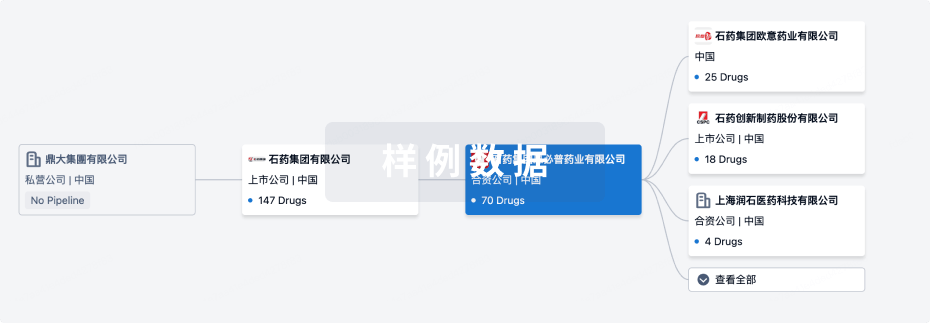
管线布局
2025年09月16日管线快照
无数据报导
登录后保持更新
药物交易
使用我们的药物交易数据加速您的研究。
登录
或
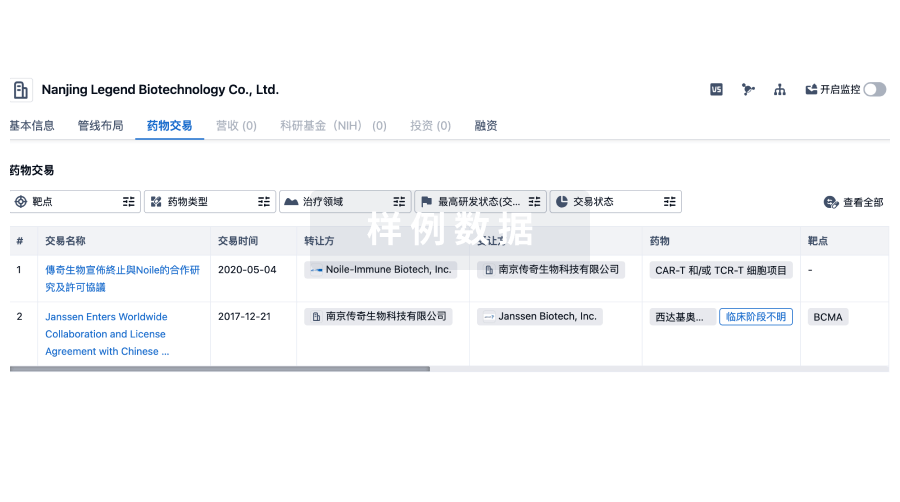
转化医学
使用我们的转化医学数据加速您的研究。
登录
或

营收
使用 Synapse 探索超过 36 万个组织的财务状况。
登录
或
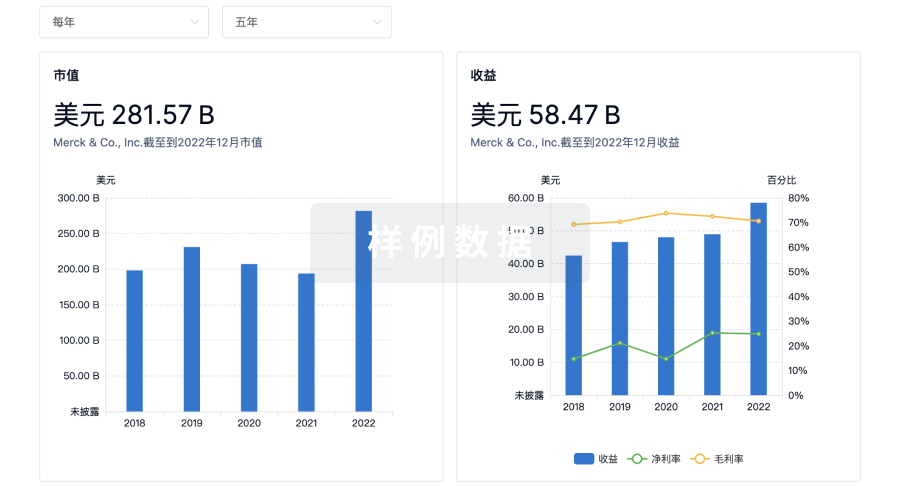
科研基金(NIH)
访问超过 200 万项资助和基金信息,以提升您的研究之旅。
登录
或

投资
深入了解从初创企业到成熟企业的最新公司投资动态。
登录
或
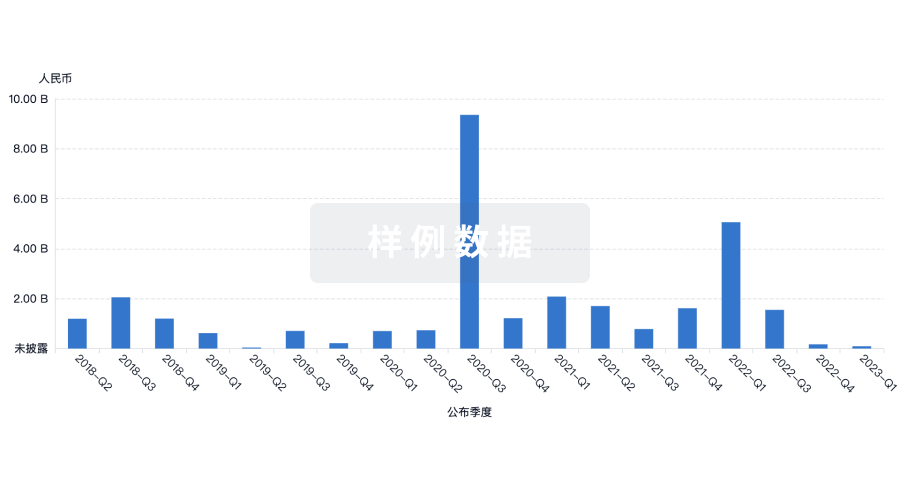
融资
发掘融资趋势以验证和推进您的投资机会。
登录
或
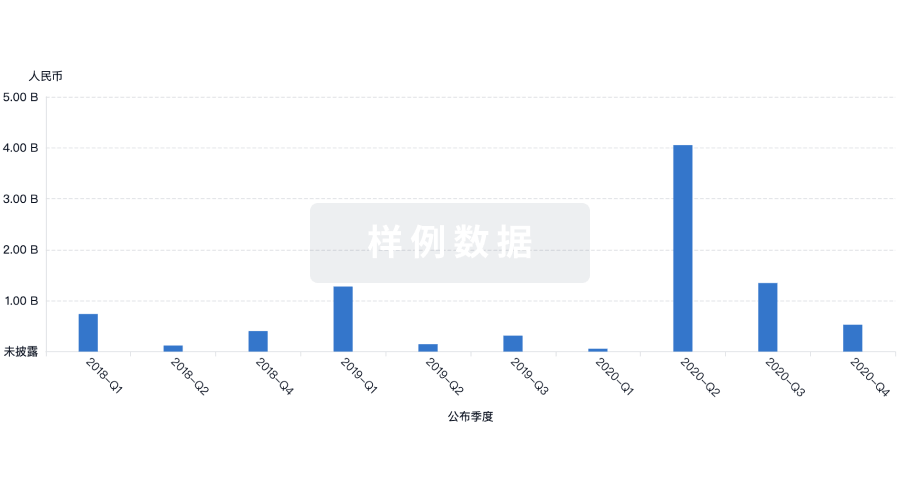
Eureka LS:
全新生物医药AI Agent 覆盖科研全链路,让突破性发现快人一步
立即开始免费试用!
智慧芽新药情报库是智慧芽专为生命科学人士构建的基于AI的创新药情报平台,助您全方位提升您的研发与决策效率。
立即开始数据试用!
智慧芽新药库数据也通过智慧芽数据服务平台,以API或者数据包形式对外开放,助您更加充分利用智慧芽新药情报信息。
生物序列数据库
生物药研发创新
免费使用
化学结构数据库
小分子化药研发创新
免费使用